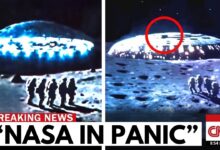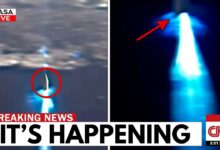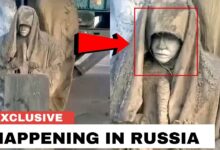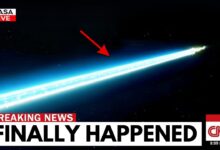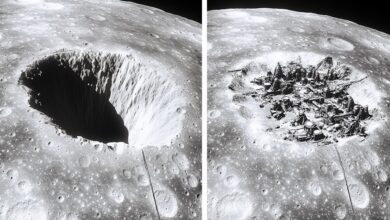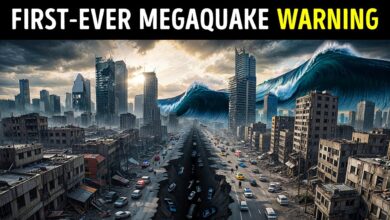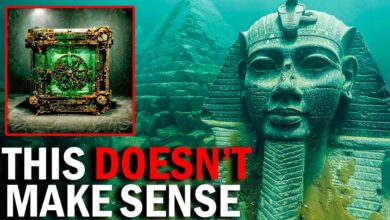James Webb Telescope JUST TERRIFIED SCIENTISTS
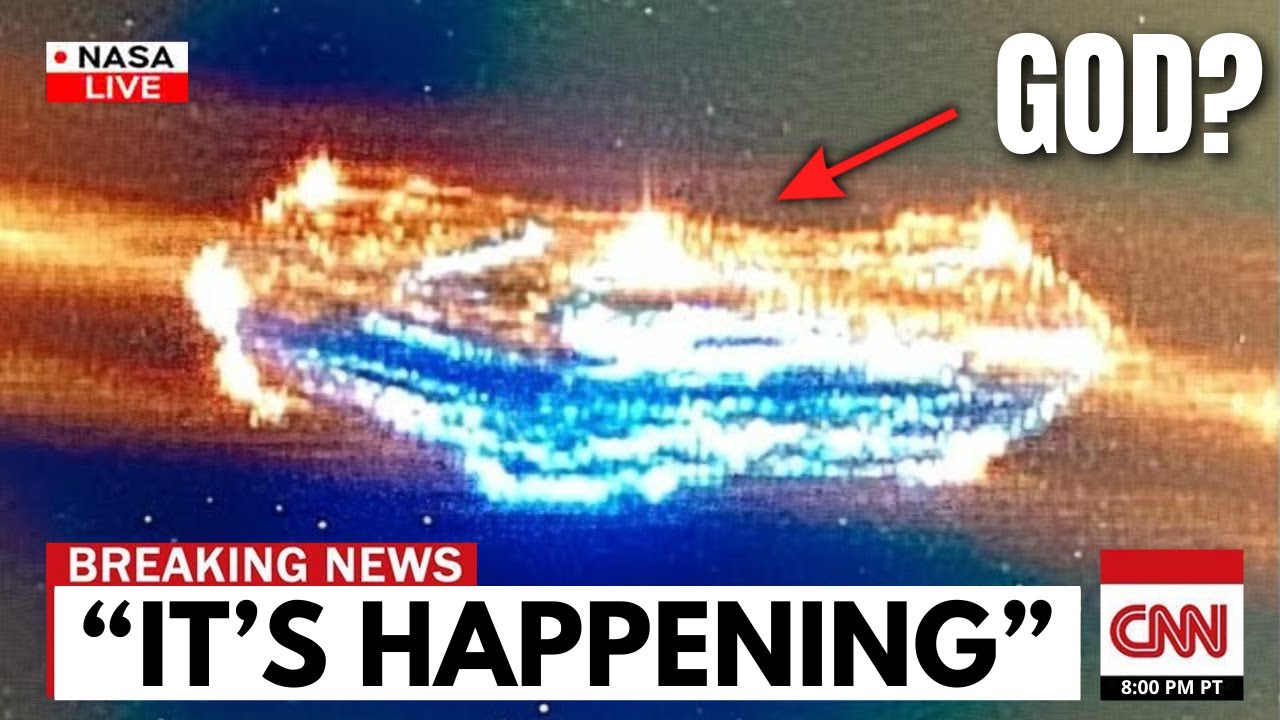
What If the James Webb Telescope Didn’t Just Look Into Space—But Opened a Door?
What if everything we thought we knew about space, time, and reality was incomplete—or even completely wrong? What if the most advanced telescope in human history just stumbled upon something we were never supposed to see?
Since its launch, the James Webb Space Telescope has amazed the world with stunning images of the early universe. But now, its latest data suggests something far more unsettling—something deeper, something stranger. This isn’t just about galaxies. It’s about a hidden pattern woven into the fabric of the cosmos—something that might be a glitch in reality itself, or worse, a window into dimensions beyond imagination.
Teaming up with Google’s quantum lab, astrophysicists and theoretical scientists analyzed Webb’s data and uncovered anomalies—light patterns that defy classical physics, repeating frequencies that echo through space like the pulse of a hidden, multi-dimensional structure. It all began with what should have been a routine scan of Abell 2744, a well-known galaxy cluster. But the light from this region behaved in ways it shouldn’t—shimmering distortions at the edge of detectability, patterns too clean and symmetrical to be random.
At first, researchers thought it was a system error. But when these anomalies appeared again and again in multiple observations, the explanation shifted. Something—something intentional—was weaving light across galaxies, like threads in a vast, cosmic tapestry.
To investigate further, scientists turned to quantum computing. They fed the telescope’s data into quantum-optimized algorithms designed to detect what classical computers could not. What emerged was chilling: the anomalies matched structures predicted by string theory. The signals resonated with models of 10 or even 11 dimensions—realms tightly curled beyond human perception. It was as if the telescope had glimpsed not just light, but the shadow of something higher—something reaching into our universe from beyond.
Suddenly, ideas once confined to mathematical theory gained empirical weight. Harvard physicist Lisa Randall posed a provocative possibility: what if some of these hidden dimensions aren’t completely sealed off? What if, under certain cosmic conditions, reality becomes thin—leaky? The longstanding mystery of gravity’s weakness may be linked to this leakage, and Webb’s strange findings could be the first proof.
In this model, reality isn’t flat or empty. It’s layered. And the light from ancient galaxies isn’t just traveling through space—it’s being refracted, twisted, patterned. Not randomly, but with symmetry. With purpose. What if the universe isn’t just expanding—but resonating? And what if humanity is only now beginning to hear that resonance?
And here’s the most haunting part: if string theory is correct, then every thought, every atom in your body is made of vibrating threads echoing across dimensions. The frequencies detected by Webb and interpreted by quantum AI aren’t alien. They’re human. They are you. The multiverse isn’t out there—it may be inside you, humming quietly beneath your awareness.
Webb’s discovery ripples into deeper questions. Could your consciousness affect space-time? If so, could it echo into other layers of reality? The long-accepted concept of a cosmological constant—Einstein’s “biggest blunder”—was once used to explain the universe’s accelerated expansion. But Webb’s deep field data revealed redshift irregularities—galaxies expanding too quickly, too unpredictably.
Some physicists now suggest that what we’ve called “dark energy” might not be a force at all, but a signal—a response. A movement reacting to us, to our observations. Could it be that in watching the universe, we are interacting with it? Influencing it?
Webb also took aim at the great ghost of astrophysics: dark matter. In several galaxy clusters, Webb’s powerful imaging showed mass simply missing. Gravity didn’t behave as expected. But rather than confirming the presence of invisible matter, the data hinted at something far more radical: gravity itself might be shifting—bleeding into dimensions we didn’t know existed. Dark matter might not be absent, just… elsewhere.
Then came the most controversial image: a structure captured in a cold void near the Eridanus Supervoid. It wasn’t a galaxy or a star. It wasn’t even a black hole. It was perfectly geometric. Symmetrical. And yet, it cast no shadow, emitted no light—only distorted everything that passed through it. Internal memos called it “the anomaly.” Data was quickly locked down, but not before independent researchers downloaded fragments. They claimed it looked like a ring—a frame. A lens. Or a doorway.
Even more shocking were the theoretical papers that followed, shared in encrypted academic circles. These documents proposed something unthinkable: that consciousness might be woven into the cosmos. That Webb’s detection of quantum harmonics, paired with Google’s AI analysis, hinted that observation itself is not passive—that the universe wants to be observed. That the act of seeing awakens something.
Some call this the “observer effect.” Others, something more ancient. But one thing is undeniable: the final images from Webb aren’t just showing us the past. They’re showing us… ourselves. As if something—someone—is watching the watchers.
The James Webb Space Telescope was designed to see deeper into the universe than any instrument before it. But what no one expected is that, in doing so, we may have looked into something not just ancient—but aware.
Webb didn’t just capture starlight—it uncovered structure, intent, and pattern. It didn’t just record anomalies. It may have triggered them. And in doing so, it may have crossed the final frontier of science: the revelation that the universe is not indifferent—it’s responsive. Maybe even alive.
In our quest to understand everything, we may have just shown the cosmos that we’re ready to be understood.
So if this shook your perception of reality… don’t forget it. Subscribe. Share. And ask yourself:
What did the James Webb Telescope really see?
A doorway?
A dimension?
A design?
